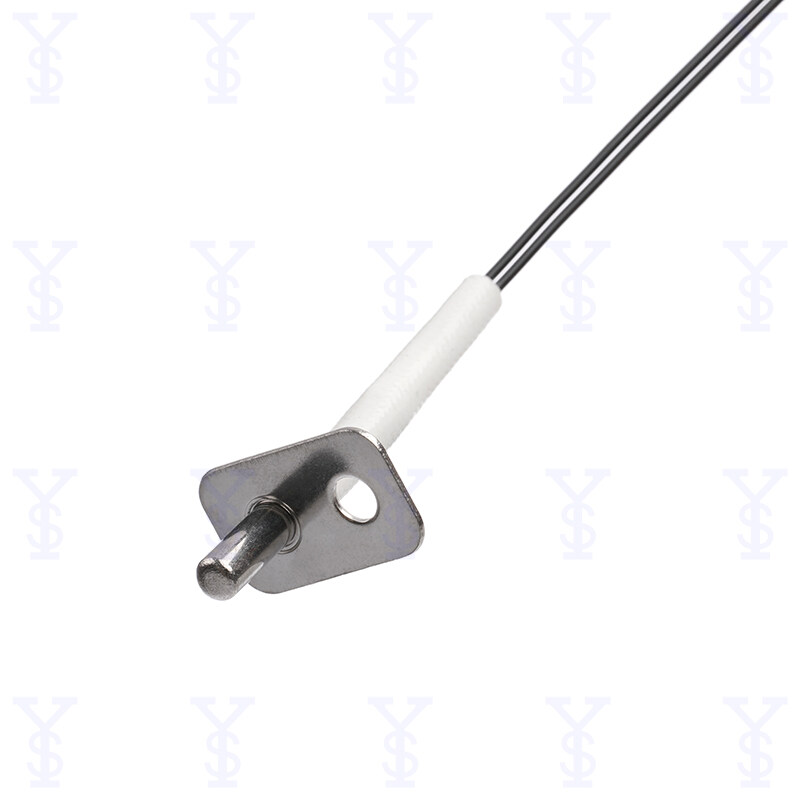Mearachd ann an cruth post-d
emailCannotEmpty
emailDoesExist
pwdLetterLimtTip
inconsistentPwd
pwdLetterLimtTip
inconsistentPwd


Mastering the Art of Cooking with an Oven Meat Thermometer Probe: A Comprehensive Guide
Welcome to our comprehensive guide on how to enhance your cooking skills with the help of an oven meat thermometer probe. Whether you're a seasoned chef or a novice in the kitchen, mastering the use of a meat thermometer can take your culinary creations to new heights. In this blog post, we'll delve into everything you need to know about oven meat thermometer probes, from how they work to why they're essential for achieving perfectly cooked dishes.
Chapter 1: Understanding the Role of Temperature in Cooking
The Importance of Temperature Accuracy in Cooking:
Temperature control is a fundamental aspect of successful cooking. Whether you're roasting a chicken, baking bread, or grilling steak, achieving the correct internal temperature is essential for ensuring that your food cooks evenly and is safe to eat. Without accurate temperature control, you run the risk of undercooking or overcooking your food, leading to unpleasant textures and potential foodborne illnesses.
How Temperature Impacts the Texture and Flavor of Meat:
The temperature at which meat is cooked directly impacts its texture and flavor. For example, cooking meat to a lower internal temperature results in a tender, juicy texture, while cooking it to a higher temperature can lead to a tougher, drier consistency. Additionally, different meats have different ideal cooking temperatures to achieve optimal flavor and texture. For instance, a medium-rare steak should be cooked to an internal temperature of around 130-135°F (54-57°C), while poultry should reach an internal temperature of 165°F (74°C) to ensure it's safe to eat.
Introducing the Oven Meat Thermometer Probe: Your Secret to Consistently Delicious Dishes:
A probe is a kitchen tool designed to accurately measure the internal temperature of meat while it cooks. Consisting of a probe that is inserted into the meat and a display unit that sits outside the oven, these thermometers provide real-time temperature readings, allowing you to monitor the cooking progress without having to open the oven door and release heat.
Chapter 2: How Oven Meat Thermometer Probes Work
Exploring the Components of an Oven Meat Thermometer Probe:
The probes typically consist of three main components: the probe, the cable, and the display unit. The probe is inserted into the thickest part of the meat, where it measures the internal temperature. The cable connects the probe to the display unit, which is placed outside the oven and shows the temperature readings. Some models also feature additional features such as programmable temperature alarms and timers.
Understanding Probe Placement for Accurate Readings:
Proper probe placement is crucial for getting accurate temperature readings. When inserting the probe into the meat, it's important to place it in the thickest part of the meat, away from any bones or fat deposits. This ensures that you're measuring the temperature of the meat itself rather than the surrounding air or bone, which can lead to inaccurate readings. Additionally, be sure to insert the probe at a slight angle to ensure that it's positioned in the center of the meat.
Different Types of Meat Thermometers: Analog vs. Digital:
Oven meat thermometers come in two main types: analog and digital. Analog thermometers use a mechanical mechanism to measure temperature and display the readings on a dial or gauge. While they're often less expensive than digital thermometers, they can be less accurate and may require frequent calibration. Digital thermometers, on the other hand, use electronic sensors to provide precise temperature readings in real-time. They're typically more accurate and easier to read, making them a popular choice among home cooks and professional chefs alike.
Chapter 3: Benefits of Using an Oven Meat Thermometer Probe
Ensuring Food Safety: Preventing Undercooked or Overcooked Meat:
One of the primary benefits is that it helps ensure food safety by preventing undercooked or overcooked meat. By accurately measuring the internal temperature of the meat, you can ensure that it reaches the recommended safe temperature to kill any harmful bacteria, without overcooking it and drying it out.
Preserving Moisture and Flavor: Cooking Meat to the Perfect Temperature:
Another advantage is that it helps preserve the moisture and flavor of the meat by cooking it to the perfect temperature. Overcooking meat can cause it to become dry and tough, while undercooking it can result in a chewy or rubbery texture. By cooking meat to the precise temperature recommended for its type and cut, you can achieve optimal texture and flavor, resulting in tender, juicy meat every time.
Saving Time and Effort: Avoiding Guesswork and Constant Checking:
Using a thermometer probe can also save you time and effort by eliminating the need for guesswork and constant checking. Rather than relying on visual cues or cooking times alone, you can simply monitor the temperature of the meat as it cooks, allowing you to focus on other tasks or prepare side dishes without worrying about overcooking or undercooking the meat.
Chapter 4: Choosing the Right Oven Meat Thermometer Probe
Factors to Consider When Selecting a Thermometer Probe:
When choosing a thermometer probe, there are several factors to consider to ensure that you select the right one for your needs. These include:
- Accuracy: Look for a thermometer probe with a high degree of accuracy, ideally within one or two degrees Fahrenheit.
- Probe Length: Choose a probe with a length that's appropriate for the types of meat you'll be cooking and the size of your oven.
- Temperature Range: Make sure that the thermometer probe can measure temperatures within the range required for your cooking tasks, whether you're roasting a turkey or baking delicate pastries.
- Ease of Use: Opt for a thermometer probe that's easy to use and read, with clear displays and intuitive controls.
- Durability: Choose a thermometer probe with a durable construction that can withstand the rigors of frequent use and high temperatures.
Top Brands and Models to Consider:
There are many reputable brands and models on the market, each with its own unique features and benefits. Some top brands to consider include:
- ThermoPro: Known for their reliable and affordable thermometers, ThermoPro offers a range of models to suit every budget and cooking style.
- OXO: A trusted name in kitchen gadgets and accessories, OXO offers a variety of thermometer probes with user-friendly designs and accurate readings.
- Weber: For those who prefer to stick with a trusted name in outdoor cooking, Weber offers a selection of thermometer probes designed specifically for use with their grills and smokers.
Budget-Friendly Options for Home Cooks:
If you're on a budget or just starting out with cooking, there are plenty of budget-friendly options available when it comes to oven meat thermometer probes. Look for thermometers priced under $50 that offer basic features like digital displays, waterproof probes, and easy calibration. While these thermometers may not have all the bells and whistles of their more expensive counterparts, they can still provide accurate temperature readings and help you improve your cooking skills.
Advanced Features to Enhance Your Cooking Experience:
For more experienced cooks looking to take their cooking to the next level, there are several advanced features to consider when choosing a thermometer probe. These include:
- Programmable Temperature Alarms: Thermometer probes with programmable temperature alarms allow you to set custom temperature thresholds and receive alerts when the meat reaches the desired temperature, ensuring that you never overcook or undercook your dishes.
- Wireless Connectivity: Some thermometer probes offer wireless connectivity, allowing you to monitor the temperature of your meat from a distance using a smartphone app or remote receiver.
- Dual Probes: Thermometer probes with dual probes allow you to monitor the temperature of two different pieces of meat simultaneously, making them ideal for cooking large cuts of meat or multiple dishes at once.
- Built-in Timers: Look for thermometer probes with built-in timers that allow you to track cooking times alongside temperature readings, helping you plan and coordinate your cooking tasks more effectively.
Chapter 5: Proper Use and Care of Your Oven Meat Thermometer Probe
Proper Placement and Insertion Techniques:
To ensure accurate temperature readings, it's important to properly place and insert the thermometer probe into the meat. Start by inserting the probe into the thickest part of the meat, making sure to avoid any bones or fat deposits. For larger cuts of meat, such as roasts or whole chickens, you may need to insert the probe from multiple angles to ensure that it's positioned in the center of the meat. Once inserted, secure the probe in place using a probe clip or heat-resistant tape to prevent it from shifting during cooking.
Tips for Securing Probes and Cables in the Oven:
When using an oven meat thermometer probe, it's important to securely fasten the probe and cables to prevent them from coming into contact with hot surfaces or moving parts inside the oven. Start by routing the cables away from any direct heat sources, such as heating elements or flames, using clips or hooks to keep them out of the way. Next, use a probe clip or heat-resistant tape to secure the probe to the cooking rack or roasting pan, ensuring that it remains in place throughout the cooking process. Finally, be sure to periodically check the probes and cables during cooking to ensure that they're still securely fastened and functioning properly.
Calibration Methods for Ensuring Accuracy:
Even the most advanced thermometer probes can fall out of calibration over time, leading to inaccurate temperature readings. To ensure that your thermometer probe is providing accurate readings, it's important to calibrate it regularly. This involves comparing its readings to those of a known accurate thermometer and making any necessary adjustments. Most digital thermometer probes come with a calibration feature that makes this process quick and easy, but it's still a good idea to double-check periodically.
Cleaning and Maintenance to Prolong Lifespan:
Proper cleaning and maintenance are essential for prolonging the lifespan of your thermometer probe and ensuring accurate temperature readings. Start by wiping down the probe and cables with a damp cloth after each use to remove any food residue or grease. If necessary, use a mild detergent to clean stubborn stains, being careful to avoid getting water inside the probe housing. Additionally, be sure to periodically inspect the probe and cables for signs of damage, such as frayed wires or bent probes, and replace them as needed to maintain accuracy and safety.
Chapter 6: Maximizing Efficiency and Flavor with Your Oven Meat Thermometer Probe
Monitoring Internal Temperature for Different Types of Meat:
Different types of meat require different cooking temperatures to achieve optimal texture and flavor. For example, beef steaks are best cooked to medium-rare or medium doneness, while poultry should be cooked to a higher temperature to ensure food safety. By monitoring the internal temperature of the meat with a thermometer probe, you can ensure that it reaches the recommended safe temperature without overcooking or undercooking it, resulting in perfectly cooked dishes every time.
Using Temperature Data to Adjust Cooking Techniques:
In addition to monitoring the internal temperature of the meat, a thermometer probe can also provide valuable data that can help you adjust your cooking techniques and achieve better results. For example, if you notice that the temperature of the meat is rising too quickly, you can reduce the heat or move the meat to a cooler part of the oven to slow down the cooking process. Similarly, if the temperature is rising too slowly, you can increase the heat or move the meat to a hotter part of the oven to speed up the cooking process.
Experimenting with Cooking Methods and Recipes:
A thermometer probe opens up a world of possibilities when it comes to experimenting with different cooking methods and recipes. Whether you're roasting a whole turkey, smoking a brisket, or baking a cake, having precise temperature control allows you to explore new techniques and flavors with confidence. Try experimenting with different cooking times and temperatures to see how they affect the texture and flavor of your dishes, and don't be afraid to get creative in the kitchen!
Achieving Perfectly Cooked Dishes Every Time:
With a thermometer probe by your side, achieving perfectly cooked dishes becomes a breeze. No more guesswork or worrying about whether your meat is cooked through—all you need to do is monitor the internal temperature and adjust your cooking technique as needed. Whether you're hosting a dinner party, cooking for your family, or simply trying out a new recipe, you can trust that your thermometer probe will help you deliver consistently delicious results every time.
Chapter 7: Troubleshooting Common Issues with Your Oven Meat Thermometer Probe
How to Address Inaccurate Readings or Malfunctions:
Despite their advanced features and reliable performance, thermometer probes can sometimes encounter issues that affect their accuracy or functionality. Common issues to watch out for include:
- Inaccurate Readings: If your thermometer probe is giving inaccurate readings, try calibrating it using the manufacturer's instructions. If calibration doesn't resolve the issue, check the probe and cables for signs of damage or wear, and replace them if necessary.
- Malfunctions: If your thermometer probe is malfunctioning or not working at all, check the batteries to ensure that they're properly inserted and charged. If the problem persists, contact the manufacturer for troubleshooting assistance or warranty service.
Checking for Damage and Wear:
Regular inspection of your thermometer probe is essential for ensuring its continued accuracy and performance. Be sure to check the probe and cables regularly for signs of damage, such as frayed wires, bent probes, or cracked housing. If you notice any damage, replace the affected components immediately to prevent further issues and ensure the safety of your food.
Replacing Batteries and Probes as Needed:
The batteries and probes of your thermometer probe are critical components that require regular maintenance and replacement to ensure accurate readings and reliable performance. Be sure to replace the batteries according to the manufacturer's recommendations, and always use fresh, high-quality batteries to ensure optimal performance. Additionally, replace the probe as needed if it becomes damaged, worn, or corroded over time.
Chapter 8: Tips and Tricks for Cooking Success
Insider Tips from Professional Chefs:
Want to take your cooking skills to the next level? Consider incorporating these insider tips from professional chefs into your culinary repertoire:
- Preheat Your Oven: Always preheat your oven to the desired temperature before cooking to ensure even cooking and consistent results.
- Use a Meat Thermometer: Invest in a high-quality thermometer probe and use it to monitor the internal temperature of your meat for perfectly cooked dishes every time.
- Let Your Meat Rest: Allow your meat to rest for a few minutes after cooking to allow the juices to redistribute, resulting in juicier, more flavorful meat.
Creative Ways to Use Your Oven Meat Thermometer Probe:
A thermometer probe isn't just for meat—it can also be used in a variety of creative ways to enhance your cooking experience. Try using your thermometer probe to:
- Monitor the internal temperature of bread and pastries to ensure they're baked to perfection.
- Test the temperature of frying oil to achieve crispy, golden-brown results.
- Measure the temperature of liquids, such as custards and sauces, to prevent scorching or curdling.
Must-Have Accessories to Complement Your Cooking Setup:
In addition to an oven meat thermometer probe, there are several accessories that can help you get the most out of your cooking experience. Consider adding these must-have accessories to your collection:
- Oven Thermometer: A separate oven thermometer can help you ensure that your oven is heating accurately and consistently, resulting in more precise cooking results.
- Instant-Read Thermometer: An instant-read thermometer is a handy tool for spot-checking temperatures and ensuring that your meat is cooked to perfection.
- Silicone Oven Mitts: Silicone oven mitts provide superior heat protection and grip compared to traditional fabric mitts, making them ideal for handling hot pans and trays in the kitchen.
Conclusion: Elevate Your Cooking Game with an Oven Meat Thermometer Probe
Congratulations! You've now mastered the art of cooking with an oven meat thermometer probe and are well-equipped to achieve perfectly cooked dishes with confidence and precision. By understanding the role of temperature in cooking, choosing the right thermometer probe, and mastering proper usage and care techniques, you can take your culinary skills to new heights and impress friends and family with your delicious creations. So go ahead, fire up your oven, and get ready to elevate your cooking game to the next level.

